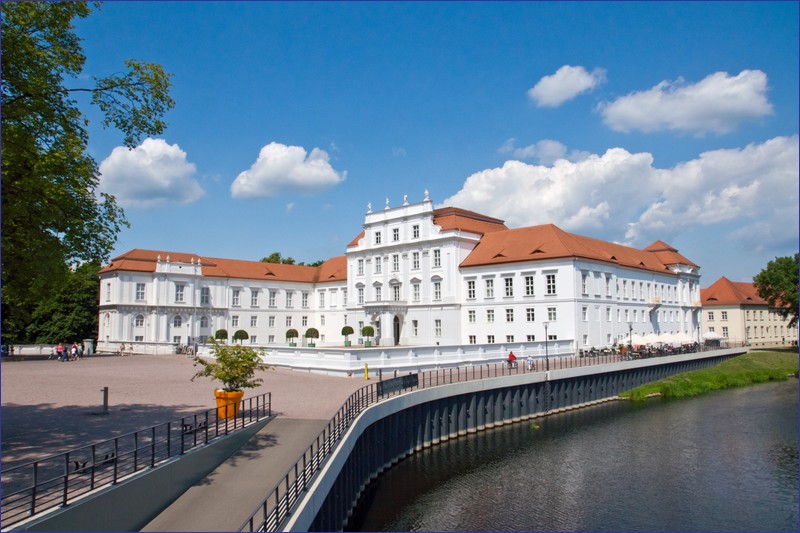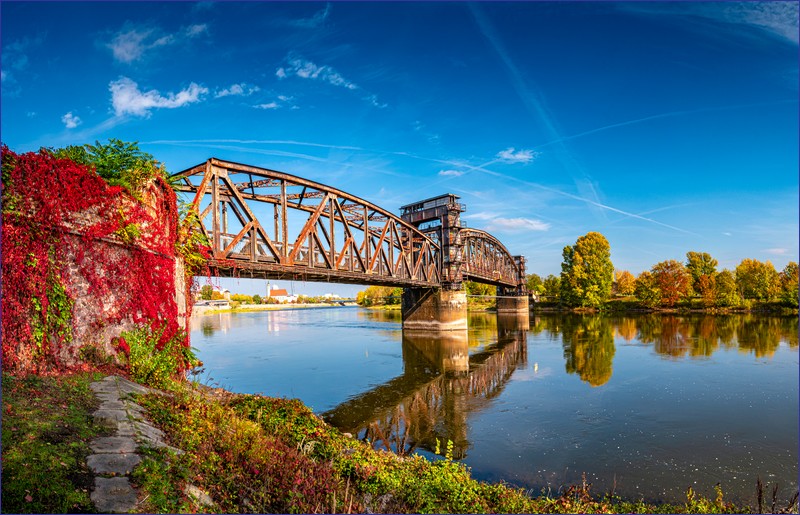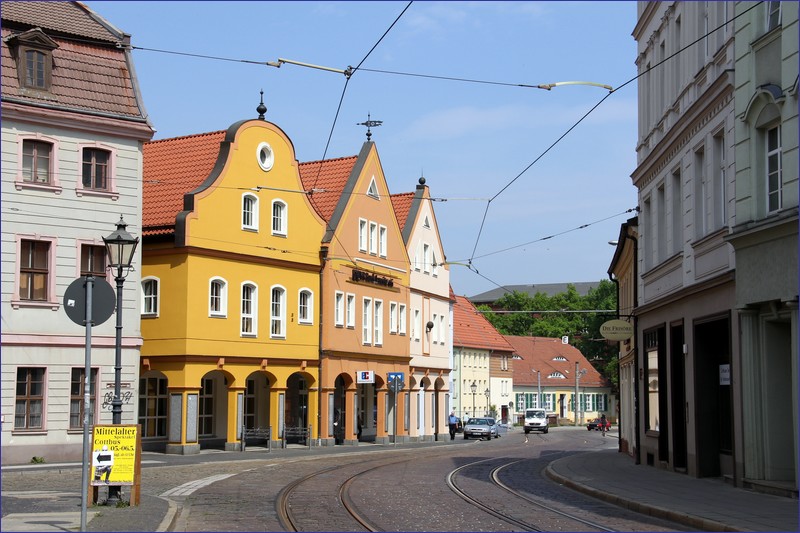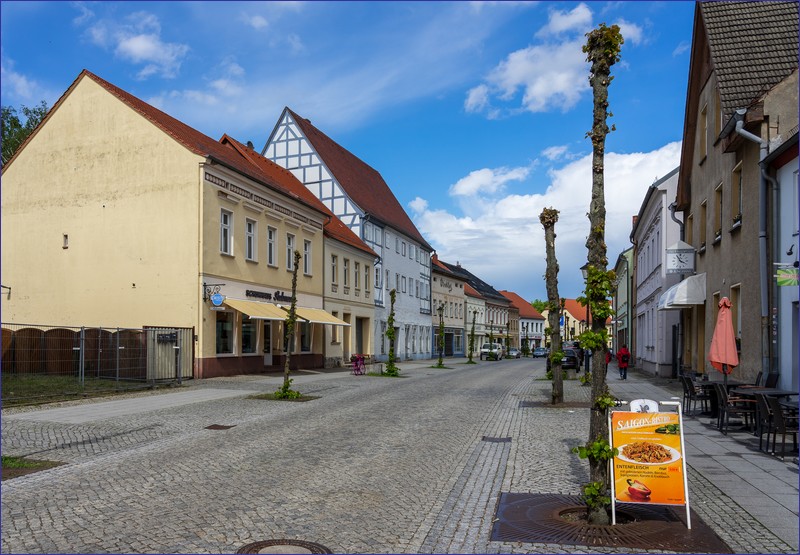Berlin is the capital of Germany and a major railway hub. It’s possible to plan day trips by train from Berlin to many destinations across Germany and neighboring countries. Long-distance trains often reach speeds of 200 km/h or more, so it’s easy to travel to and return from places like Poznań (as long as there are no railway works), Prague, or Hanover within a single day.
I’ve listed only the most important destinations that can be reached by regional train from Dresden in no more than two hours. In some cases, a transfer is necessary. In the future, I will try to expand the article with other interesting places.
Direction: Angermünde
Eberswalde (optional) – a town surrounded by forests. To the south lies the Barnim Nature Park, and to the north, the Schorfheide-Chorin Biosphere Reserve (UNESCO) with the Plagefenn Reserve. During the GDR era, it was known for heavy industry. Some of the former industrial buildings have been transformed into restaurants and cafés, and there is also a family garden (“Familiengarten”) with various attractions for children. Visitors can explore the botanical garden, zoo, and Eberswalde Museum.
Chorin – a village home to a Cistercian monastery complex, established in 1258. The monastery church is considered one of the most beautiful heritage sites in Brandenburg. The permanent exhibition focuses on monastic life and Gothic architecture, with restoration work carried out by Karl Friedrich Schinkel.
Angermünde – a lovely, peaceful town located by Lake Mündesee, historically a center of craftsmanship. It retains its square urban layout, historic churches, and a defensive wall surrounding the old town. While walking through the city, visitors can encounter sculptures carved into multi-ton boulders. Unlike many other towns in the region, its center wasn’t destroyed during the war. Notable sites include the former Franciscan monastery and the Church of St. Mary with the famous Joachim Wagner organ.
Direction: Oranienburg
Oranienburg – the city’s main attraction is a Baroque residence built for Luise Henriette of Nassau-Oranien, wife of Elector Frederick William. Constructed between 1651 and 1655, the palace has undergone many reconstructions over the centuries. It is surrounded by a beautiful park. Inside, visitors can admire unique works of art and royal porcelain. On the outskirts of the city lies the Sachsenhausen concentration camp, where over 200,000 people perished. It is now a memorial and museum.

Direction: Magdeburg
Potsdam – a medium-sized city bordering Berlin, first mentioned in 993. On the night of April 14–15, 1945, Allied bombing raids destroyed much of the historic center. Some of the damaged buildings have been rebuilt. Must-see sites include Sanssouci Palace, with its beautiful interiors and park, and the Dutch Quarter with its charming brick buildings. The Russian Colony Alexandrowka, with its wooden cottages, has been preserved. Other points of interest are found around the Old Market. The city’s most impressive church is St. Nicholas’ Church, built between 1826 and 1830 on the site of an earlier church that burned down in 1795.
Werder an der Havel (optional) – a small town situated by lakes. It features a small Old Town and Werder Island. The area is crisscrossed with bike trails.
Brandenburg an der Havel (optional) – a city perfect for a short visit. Located picturesquely by rivers and lakes, it is full of greenery. The city is known for its churches: in Neustadt, the Church of St. Catherine with richly decorated facades, and in Altstadt, the Church of St. Gotthard. The most important sacred building is the Cathedral of St. Peter and Paul, dating back to the 12th century, known for its interior unicorn-themed decorations. Visitors can also see sections of the medieval defensive wall, towers, and the old town hall, guarded by a large statue of Roland the Knight. Other attractions include the Museum of Industry and the State Archaeological Museum.
Magdeburg (optional) – capital of the federal state of Saxony-Anhalt. Around 80% of the city was destroyed during WWII. Some landmarks along the old town on the Elbe River have been restored. The main attraction is the Cathedral of St. Maurice and St. Catherine, begun in 1209 and completed in 1520. Inside, you’ll find architectural fragments from various medieval buildings reused decoratively. A notable modern structure is the Green Citadel, a distinctive residential complex. Other attractions include the zoo, the rebuilt city hall, and several museums: the Museum of Technology, Local History Museum, and the Museum of Natural History.

Direction: Cottbus
Spreewald – a biosphere reserve often called the “German Venice.” You can rent kayaks and paddle through canals weaving through the reserve. The nearest train stations are Lübben and Lübbenau, served by regional trains to Cottbus. Groups can book Spree River boat tours. Some islands have no road access. In Lübbenau, don’t miss the historic Old Town, Lübbenau Castle, and river port. Attractions in Lübben include a Renaissance castle and old watchtower. The local regional museum is dedicated to Paul Gerhardt, a hymn writer. Buses run from Lübbenau to the Lehde open-air museum and Burg, known for the Bismarck Tower and Protestant church.
Cottbus – the informal capital of Lower Lusatia. The market square is lined with Baroque townhouses, and house no. 24 houses the Brandenburg Pharmacy Museum. Other museums include the City Museum, Sorbian Cultural Museum, and Brandenburg Museum of Modern Art. Notable buildings include the Art Nouveau Theater from 1908. St. Nicholas’ Church features the oldest tombstone in Lusatia, dating back to 1230. Branitz Park, with its palace museum and lake pyramid tomb of explorer Prince Hermann von Pückler-Muskau, is well preserved. Railway enthusiasts may enjoy the park railway. A scenic riverside path leads to a historic mill 3 km from the city center.

Direction: Wittenberg
Jüterbog (optional) – a small, picturesque town with preserved Gothic landmarks. During the Reformation, Johann Tetzel’s sermon defending indulgences angered Martin Luther, who was living nearby in Wittenberg. Much of the city wall, including towers and gates, has survived. The arcaded town hall and St. Nicholas’ Church with twin towers are particularly notable. The sacristy features medieval wall paintings. About 3 km north is Kloster Zinna, known for its former Cistercian monastery with a 13th-century stone church.
Wittenberg – a town on the Elbe River that became the cradle of the Reformation thanks to Martin Luther. The castle, built by Frederick the Wise between 1489 and 1525, lost much of its original character due to war and reconstruction, and now houses the City Museum. Next to it stands the Castle Church from the turn of the 15th and 16th centuries. In 2025, Luther’s House reopened after renovation. The town also features a small zoo.
Related articles:
Train travel in Germany – a comprehensive guide
